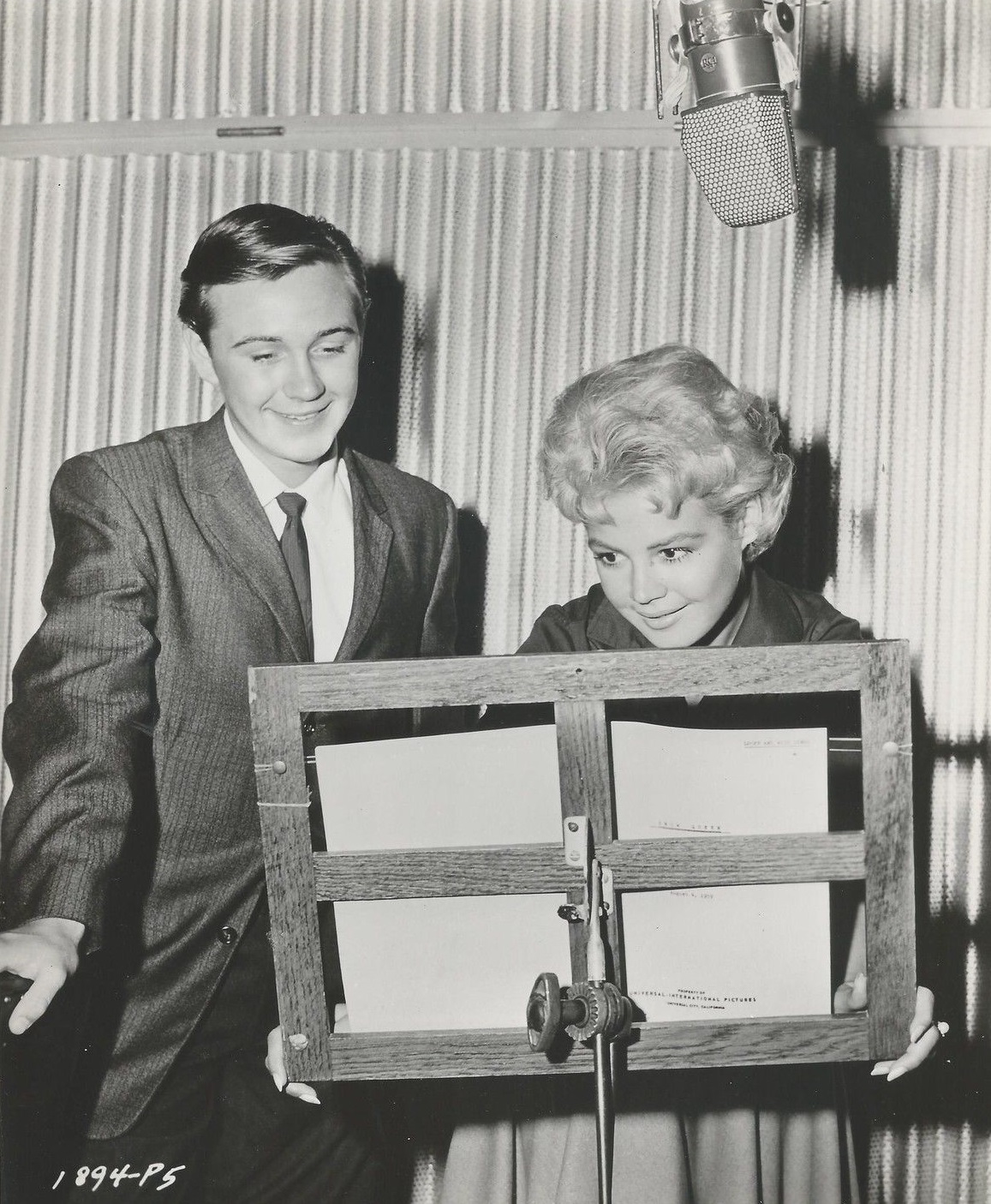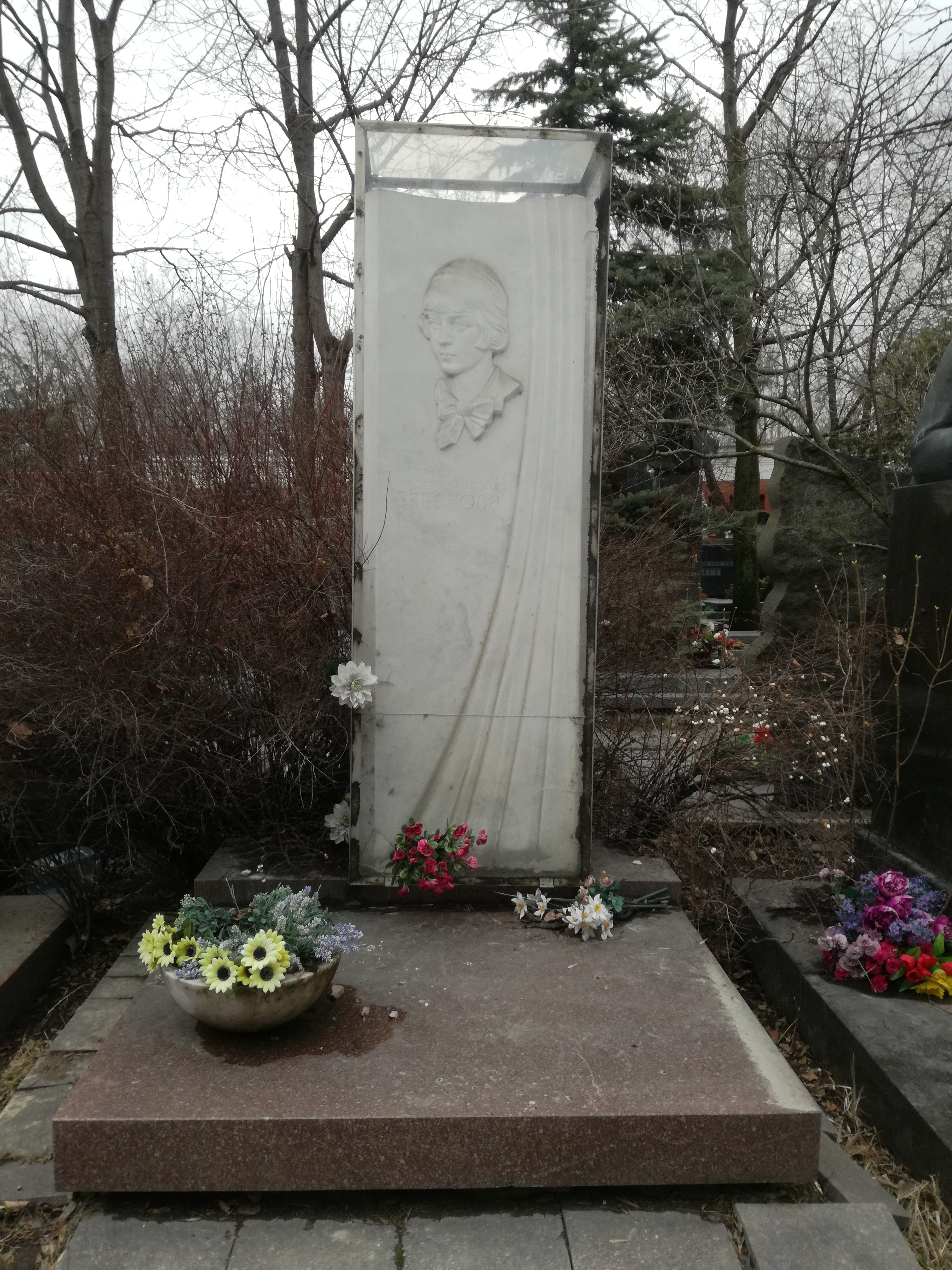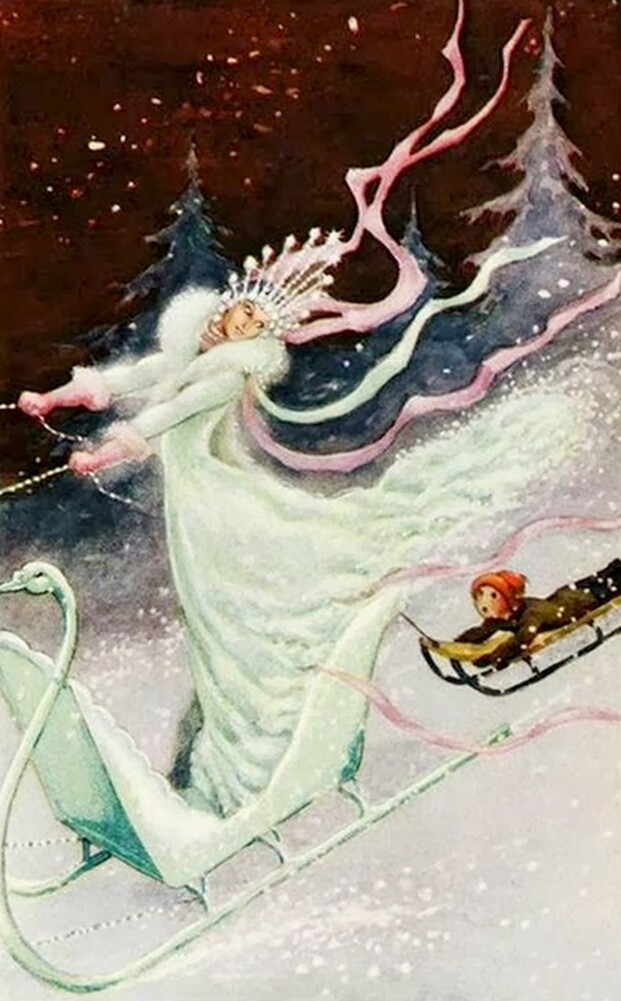|
The Snow Queen (1957 Film)
''The Snow Queen'' (russian: Снежная королева, translit=Snezhnaya Koroleva) is a 1957 Soviet animated musical fantasy film directed by Lev Atamanov. It was produced by Soyuzmultfilm and is based on the 1844 story of the same name by Hans Christian Andersen. The film is one of the first cinematic adaptations of the Scandinavian Danish fable ever since the story was written by Andersen in '' New Fairy Tales. First Volume. Second Collection'' (1844). The film was the ninth full-length animated film from studio Soyuzmultfilm. The film was released in Russia on November 1, 1957. The film was re-released with English soundtracks in 1959, 1993 and 1995. The film was translated into all major languages: English, German, French, Italian, Spanish and even Swedish. In 1959 at the height of the Cold War, Universal Pictures acquired the film for U.S. theatrical distribution. In the United States, in the 1960s and 70s, it became a good tradition to show ''The Snow Queen'' durin ... [...More Info...] [...Related Items...] OR: [Wikipedia] [Google] [Baidu] |
Lev Atamanov
Lev Atamanov (russian: Лев Атаманов), born Levon Konstantinovich Atamanyan (russian: Левон Константинович Атаманян, hy, Լեւոն Կոնստանտինի Ատամանյան; – 12 February 1981), was a Soviet Armenian animation director. Atamanov was one of the foremost Soviet animation film directors and one of the founders of Soviet animation art. He is the director of famous classics of Soviet animation, such as the prize-winning fairy tales The Yellow Stork' (Zhyoltyy aist) (1950), '' Scarlet Flower'' (Alenkiy tsvetochek) (1952), The Golden Antelope' (1954), the full-length animation ''The Snow Queen'' (1957), and the modern satirical tale '' The Key'' (1961). In his works Lev Atamanov subtly conveyed the national coloring of fairy tales and combined romantic elation in images of positive characters with warm and kind humor. Atamanov was one of the most respected Soviet animators and is regarded as one of the greatest artists in t ... [...More Info...] [...Related Items...] OR: [Wikipedia] [Google] [Baidu] |
Vancouver International Film Festival
The Vancouver International Film Festival (VIFF) is an annual film festival held in Vancouver, British Columbia, Canada, for two weeks in late September and early October. The festival is operated by the Greater Vancouver International Film Festival Society, a provincially-registered non-profit and federally-registered charitable organization, which also runs the year-round programming of the Vancity Theatre and Studio Theatre at the VIFF Centre. Both in terms of admissions and number of films screened (133,000 and 324 respectively in 2016), VIFF is among the five largest film festivals in North America. The festival screens films annually from approximately 73 countries on 10 screens. The festival has three main programming platforms: East Asian film, Canadian film, and nonfiction films. Besides films from around the world, VIFF also includes talks, workshops, performances, and other special events related to cinema. History The festival was first launched in 1958; however, f ... [...More Info...] [...Related Items...] OR: [Wikipedia] [Google] [Baidu] |
Sergey Martinson
Sergey Alexandrovich Martinson (russian: Серге́й Александрович Мартинсон; – 2 September 1984) was a Russian eccentric comic actor, the master of pantomime, buffoonery and grotesque. He became People's Artist of the RSFSR in 1964. Sergey Alexandrovich Martinson was born in Saint Petersburg in the family of Swedish and Russian descent. His parents adored theater and took their son to many performances. As a schoolboy, Sergey played in a theatrical studio. After one year of education in the Technological institute, he decided to become a professional actor. At the entrance exams he read Boris Godunov's monologue from Pushkin's play. The exam board roared with laughter, but refused to accept him. He later joined the theatrical institute from a second attempt. Martinson worked in several theaters. In 1924–1941 he played in the Theatre of the Revolution. In 1925–1926, 1929–1933, 1937–1938 he was the leading actor of Vsevolod Meyerhold's theatr ... [...More Info...] [...Related Items...] OR: [Wikipedia] [Google] [Baidu] |
Yanina Zhejmo
Yanina Boleslavovna Zhejmo (russian: Янина Болеславовна Жеймо; pl, Janina Bolesławowna Żejmo; 29 May 1909 – 29 December 1987) was a Soviet actress of Polish origin. Her father was Polish and her mother was Russian. She appeared in more than 30 films between 1925 and 1955. Partial filmography * '' Mishki versus Yudenich'' (1925, Short) - youngster * '' The Devil's Wheel'' (1926, Short) * ''The Overcoat'' (1926) * '' Somebody Else's Coat'' (1927) - Circus actress * '' Little Brother'' (1927, Short) * '' The Club of the Big Deed'' (1927) * ''The New Babylon'' (1929) - Therese, a seamstress * ''Road to the World'' (1929) * '' The Blue Express'' (1929) * '' Alone'' (1931) - Young Teacher * ''Man from Prison'' (1931) * ''Seeking Asylum'' (1932) * ''My Motherland'' (1933) - Olya * ''Song of Happiness'' (1934) - Anuk * '' Red Army Days'' (1935) - Kika, her friend * '' Girl Friends'' (1936) - Asya * ''Lenochka i vinograd'' (1936) * ''Enemies'' (1938) - Nadya * ... [...More Info...] [...Related Items...] OR: [Wikipedia] [Google] [Baidu] |
Maria Babanova
Maria Ivanovna Babanova (russian: Мария Ивановна Бабанова; 11 November 1900 – 20 March 1983) was a Soviet and Russian actress and pedagogue. She has been described as Vsevolod Meyerhold's greatest actress and was named a People's Artist of the USSR in 1954. Life and career Babanova made her debut in Theodore Komisarjevsky's theatre in 1919. A year later, she joined Vsevolod Meyerhold's acting courses. Described as "a small, radiant, energetic actor", Babanova captivated the Moscow public in Meyerhold's production of '' The Magnanimous Cuckold'' (1922). The three leading players, Igor Ilyinsky, Maria Babanova and Vasily Zaichikov were so in harmony they became known collectively as 'Il-Ba-Zai'. Babanova was viewed as the first great actress to emerge after the October Revolution. A typical review of her acting read as follows: Babanova's triumphs allegedly aroused the jealousy of Meyerhold's wife, Zinaida Reich. In 1927, Babanova was forced to leave Meye ... [...More Info...] [...Related Items...] OR: [Wikipedia] [Google] [Baidu] |
Cold War
The Cold War is a term commonly used to refer to a period of geopolitical tension between the United States and the Soviet Union and their respective allies, the Western Bloc and the Eastern Bloc. The term '' cold war'' is used because there was no large-scale fighting directly between the two superpowers, but they each supported major regional conflicts known as proxy wars. The conflict was based around the ideological and geopolitical struggle for global influence by these two superpowers, following their temporary alliance and victory against Nazi Germany and Imperial Japan in 1945. Aside from the nuclear arsenal development and conventional military deployment, the struggle for dominance was expressed via indirect means such as psychological warfare, propaganda campaigns, espionage, far-reaching embargoes, rivalry at sports events, and technological competitions such as the Space Race. The Western Bloc was led by the United States as well as a number of other First W ... [...More Info...] [...Related Items...] OR: [Wikipedia] [Google] [Baidu] |
New Fairy Tales
''New Fairy Tales. First Volume'' ( da, Nye Eventyr. Første Bind) is a collection of nine fairy tales by Hans Christian Andersen. The tales were published in a series of three installments by C. A. Reitzel in Copenhagen, Denmark between November 1843 and April 1845. Contents ''New Fairy Tales. First Volume. First Collection'' ''New Fairy Tales. First Volume. First Collection'' (''Nye Eventyr. Første Bind. Første Samling'') is the first installment. Was published on 11 November 1843 (as was customary at the time however, the title page is dated 1844) and contained four tales: * " The Angel" ("Engelen") tells of a dead child and an angel gathering flowers for Heaven. In a poverty-ridden section of the city, the angel retrieves a lily from a trash heap and explains the flower had cheered a dying child. The angel reveals he was that child. Andersen had been attracted to the sentimental 'dying child' theme since composing the poem, "The Dying Child", during his school days, but ... [...More Info...] [...Related Items...] OR: [Wikipedia] [Google] [Baidu] |
The Snow Queen
"The Snow Queen" ( da, Snedronningen) is an original fairy tale by Danish author Hans Christian Andersen. It was first published 21 December 1844 in '' New Fairy Tales. First Volume. Second Collection'' (''Nye Eventyr. Første Bind. Anden Samling''). The story centers on the struggle between good and evil as experienced by Gerda and her friend, Kai. The story is one of Andersen's longest and most highly acclaimed stories. It is regularly included in selected tales and collections of his work and is frequently reprinted in illustrated storybook editions for children. Story The devil, in the form of an evil troll, has made a magic mirror that distorts the appearance of everything that it reflects. The magic mirror fails to reflect the good and beautiful aspects of people and things, and magnifies their bad and ugly aspects. The devil, who is headmaster at a troll school, takes the mirror and his pupils throughout the world, delighting in using it to distort everyone and everythi ... [...More Info...] [...Related Items...] OR: [Wikipedia] [Google] [Baidu] |
Fantasy Film
Fantasy films are films that belong to the fantasy genre with fantastic themes, usually magic, supernatural events, mythology, folklore, or exotic fantasy worlds. The genre is considered a form of speculative fiction alongside science fiction films and horror films, although the genres do overlap. Fantasy films often have an element of magic, myth, wonder, escapism, and the extraordinary. Prevalent elements include fairies, angels, mermaids, witches, monsters, wizards, unicorns, dragons, talking animals, ogres, elves, trolls, white magic, gnomes, vampires, werewolves, ghosts, demons, dwarves, giants, goblins, anthropomorphic or magical objects, familiars, curses and other enchantments, worlds involving magic, and the Middle Ages. Subgenres Several sub-categories of fantasy films can be identified, although the delineations between these subgenres, much as in fantasy literature, are somewhat fluid. The most common fantasy subgenres depicted in movies are High Fantasy a ... [...More Info...] [...Related Items...] OR: [Wikipedia] [Google] [Baidu] |
Musical Film
Musical film is a film genre in which songs by the characters are interwoven into the narrative, sometimes accompanied by dancing. The songs usually advance the plot or develop the film's characters, but in some cases, they serve merely as breaks in the storyline, often as elaborate "production numbers". The musical film was a natural development of the stage musical after the emergence of sound film technology. Typically, the biggest difference between film and stage musicals is the use of lavish background scenery and locations that would be impractical in a theater. Musical films characteristically contain elements reminiscent of theater; performers often treat their song and dance numbers as if a live audience were watching. In a sense, the viewer becomes the diegetic audience, as the performer looks directly into the camera and performs to it. With the advent of sound in the late 1920s, musicals gained popularity with the public and are exemplified by the films of Busby Ber ... [...More Info...] [...Related Items...] OR: [Wikipedia] [Google] [Baidu] |



.png)


.jpg)